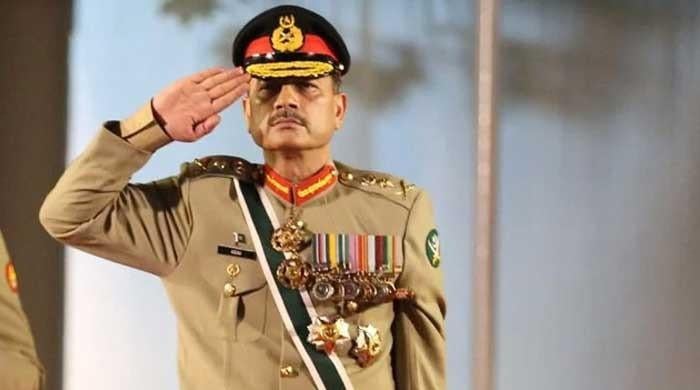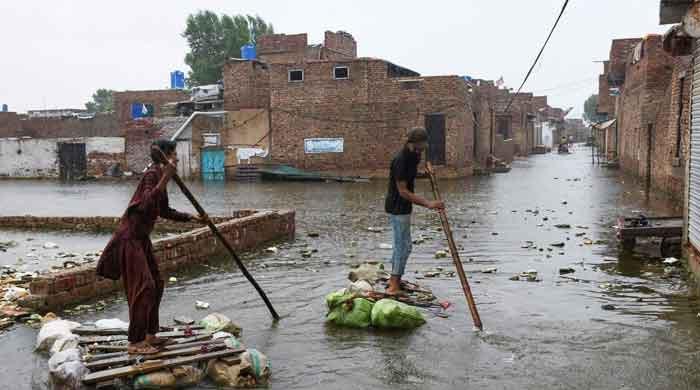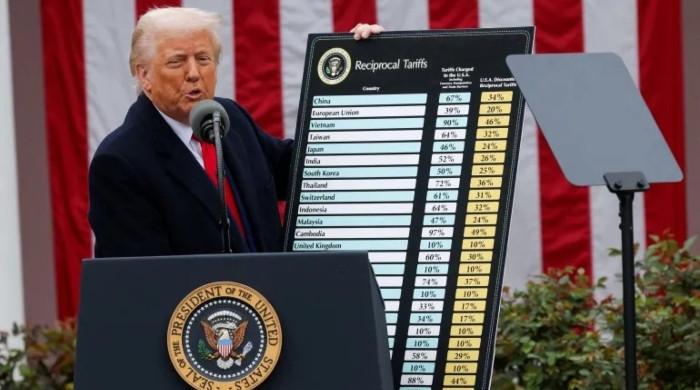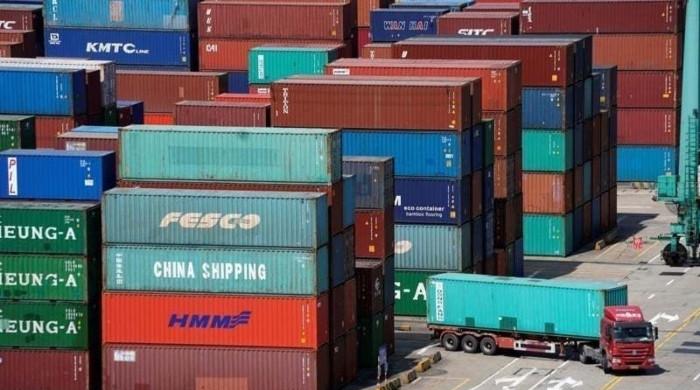Targeting young voters
Numbers are clearly showing that no political party can win a majority in elections without winning young voters
October 02, 2023
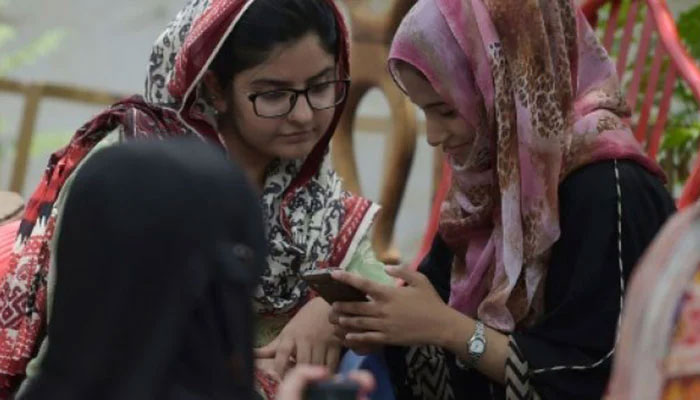
Young voters are likely to play a decisive role in the upcoming general elections in Pakistan. According to data released by the Election Commission of Pakistan (ECP), nearly 45% of eligible voters are aged less than 35 years. Out of the 126 million registered voters in the country, 50.61 million voters are aged between 18 and 35 years.
Voters aged between 26 and 35 years now form the largest group with 30.26 million eligible voters. The second largest group of voters comprises 20.77 million voters aged between 36 and 45 years. The third largest group consists of voters aged between 18 and 25 years with 20.35 million voters.
The numbers are clearly showing that no political party can win a majority in elections without winning over young voters. It is going to be a huge political challenge for political parties to address the concerns of young voters.
No political party can take these voters for granted. For instance, in the local government elections in Karachi last year, only 9.0% of young voters bothered to cast their ballots and showed little interest in the elections despite the fact that the PTI was also in the run.
Discontented young voters will cast their votes only when they have the hope and confidence that their votes will make a difference.
All the mainstream political parties are trying to win over young voters through traditional slogans and pledges of jobs, cheap loans and laptops. These promises might not prove enough to satisfy the aspirations of young people.
Traditional power politics is not very attractive for many young people since most of them are not satisfied with the way this system is run. They feel abandoned by the ruling elite and are not satisfied with the way the economy is being handled by leaders. They want serious reforms in governance, economy and politics.
The reforms agenda is more attractive for the educated young urban middle class. They want to see major reforms in the governing system. Previously, young adults overwhelmingly supported the PTI for its reform agenda. But the PTI government in its 44-month-long rule failed to undertake any major reform it promised.
Young people want reforms in the police and criminal justice system as well. They want more democratic and personal freedom and rights. They want more political and economic share from the ruling elite.
In general, a majority of young people are facing issues like high unemployment, rising poverty, expensive education and lack of economic opportunities. No mainstream political party — including the PTI, PML-N and PPP — has so far come up with a plan or programme to solve or address these issues.
For young Pakistanis who belong to the lower middle and working classes, decent jobs and economic opportunities are a priority. They want equal opportunities, social and economic justice, and an end to the status quo that has hampered their progress and growth.
Many young people want access to higher and professional education that is both affordable and of high quality. Expensive education is no more within the reach of many working-class and lower-middle-class youth. But political parties so far have failed to offer them anything concrete. Rising unemployment, soaring inflation, and rampant corruption have adversely affected the youth.
Many educated young people both in urban and rural areas want more than traditional electoral slogans and rhetoric. Young people want a clear change in the governance system and more economic opportunities to flourish.
The PTI was able to mobilise and win over the majority of young educated middle voters in the country in the 2013 and 2018 general elections. The middle and upper layers of the middle class overwhelmingly supported the PTI, which is still the most popular party among these layers of young people.
However, the support for the PTI is not as solid among lower-middle and working-class youth as it is in the middle class. The PML-N also enjoys considerable support among the working class and poor sections in Punjab. The PPP is enjoying considerable support among young voters in Sindh but the situation is not very favourable on the ground for the PTI this time.
The PTI has been facing many obstacles since the May 9 violence. It is not clear yet how successfully the PTI will be able to mobilise its support base in the upcoming general elections. The PTI’s organisational structure is in tatters. Imran Khan and other party leaders are either in prison or in hiding. The party is facing many legal and political challenges at the moment.
A high youth turnout can play a key role in many constituencies but there are serious concerns over the turnout of young voters in the upcoming polls. This is primarily because the mainstream political parties are not addressing the issues faced by the youth.
The mainstream political parties need to provide hope to young voters for a better future and prosperous Pakistan. Political parties need to come up with programmes and slogans that can attract the imagination of young people. Traditional election rhetoric, promises and manifestos for power politics might fall short of attracting young people.
There has been considerable scepticism over how many of these young voters will actually make it to polling stations on Election Day. Political parties will have to make extra efforts to reach out to young voters with a view to mobilising them for elections. The low turnout of young voters will strengthen the grip of traditional politicians and electables.
They are disillusioned by mainstream parties who have failed to address their issues. As a result, many of them prefer to abstain from voting instead of visiting polling stations to make a difference.
Young voters who want to inspire change need to show their support for those candidates who represent their needs. Only young people can vote in their interest. They must exercise this right and make their presence felt.
The writer is a freelance journalist.
Disclaimer: The viewpoints expressed in this piece are the writer's own and don't necessarily reflect Geo.tv's editorial policy.




